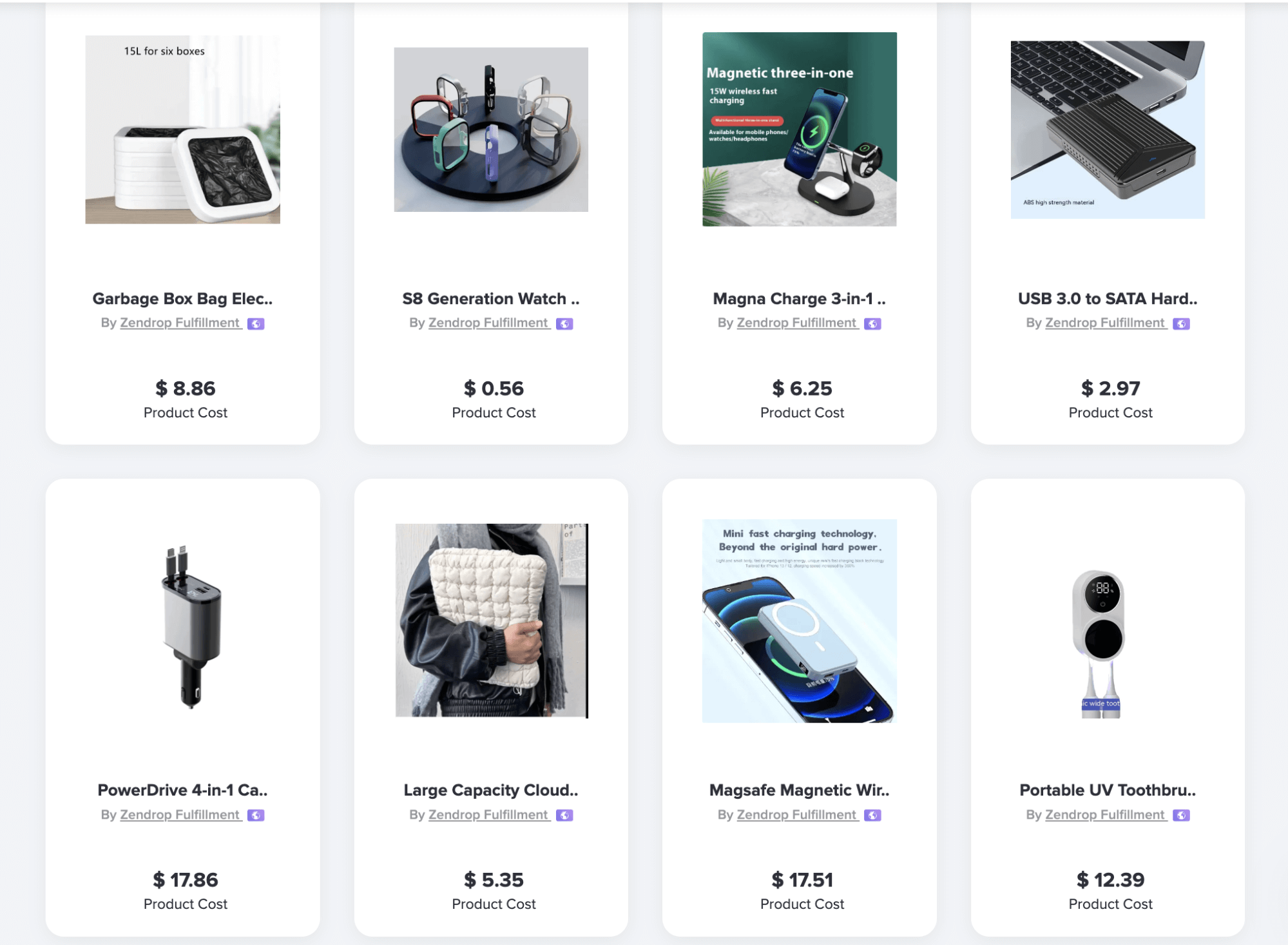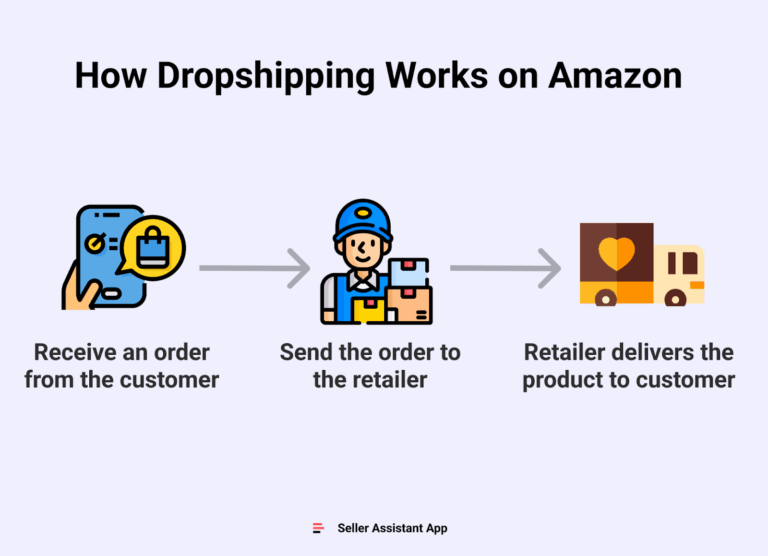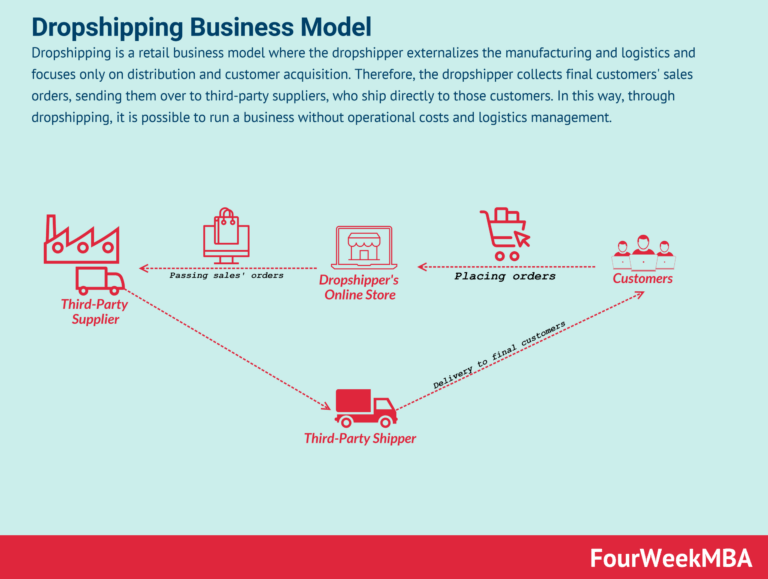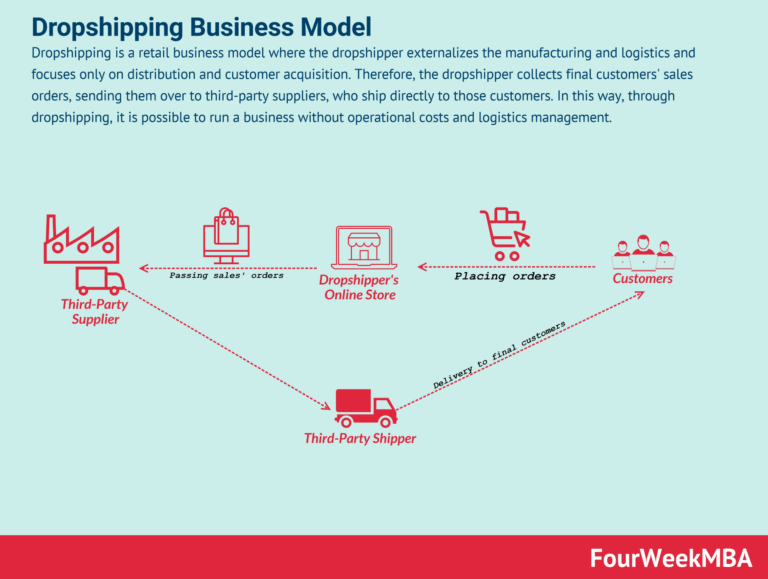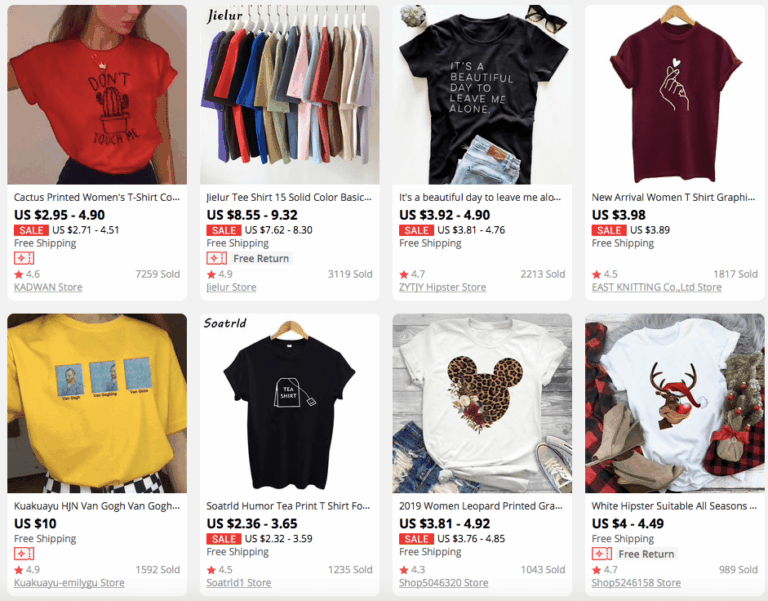How to Start Dropshipping in 2025 (A Beginner’s Guide)
Your Complete Guide to best dropshipping products
Introduction to Your Journey in Dropshipping
Congratulations on taking the first step toward your entrepreneurial dream! If you’re reading this, it’s clear that you have the ambition to start your own business, and that’s something to be proud of. The world of e-commerce is booming, and dropshipping stands out as one of the most accessible and flexible options for aspiring entrepreneurs like yourself.
So, what exactly is dropshipping? Simply put, it’s a retail fulfillment method where you, the seller, don’t need to hold any inventory. When a customer places an order in your online store, a third-party supplier handles the storage, packing, and shipping of the product directly to the customer. This means you can focus on marketing and growing your business without the headaches of managing stock or dealing with logistics. The beauty of dropshipping lies in its low startup costs—there’s no need to invest heavily in inventory upfront. With just a website and a marketing strategy, you can start selling products almost immediately.
In this guide, we will provide you with a comprehensive roadmap to navigate the dropshipping landscape successfully. You’ll learn how to identify trending products that resonate with your target audience, choose reliable suppliers, and set up your online store. We’ll delve into effective marketing strategies that will help you attract customers and make your first sale. Additionally, we’ll discuss the qualities that define the best dropshipping products, ensuring that you select items that not only sell but also generate substantial profit margins.
By the end of this guide, you will be equipped with the knowledge and tools to launch your dropshipping venture confidently. Remember, every successful entrepreneur started with a dream, and with dedication and the right approach, you can turn yours into a reality. Embrace the journey ahead, and let’s unlock the potential of dropshipping together!
What You’ll Learn In This Guide
- Your Complete Guide to best dropshipping products
- How Does Dropshipping Actually Work? A Step-by-Step Breakdown
- The Pros and Cons of Dropshipping: Is It Right for You?
- Step 1: Finding a Profitable Niche and Winning Products
- Step 2: Choosing the Right Dropshipping Suppliers
- Step 3: Building Your Online Store
- Step 4: Marketing Your Dropshipping Business to Get Sales
- Common Mistakes to Avoid as a Beginner
- Frequently Asked Questions (FAQs) about best dropshipping products
- Conclusion: Your Next Steps to Launching Your Business
- Important Disclaimer
How Does Dropshipping Actually Work? A Step-by-Step Breakdown
Understanding the Dropshipping Process: A Step-by-Step Breakdown
Starting a dropshipping business can be an exciting venture, especially for aspiring entrepreneurs. The dropshipping model allows you to sell products online without the need to hold inventory, making it a low-risk way to enter the e-commerce space. Here’s a clear, step-by-step breakdown of how dropshipping works:
- Customer Places an Order on Your Online Store
-
When a customer visits your online store and decides to purchase a product, they add it to their cart and complete the checkout process. This is the initial point of engagement where your marketing efforts pay off, leading to a sale.
-
You Receive the Payment
-
After the customer places the order, the payment is processed through your payment gateway. This is where you earn your revenue. It’s crucial to ensure that your payment system is secure and user-friendly to encourage conversions. You will collect the retail price, which is typically marked up from the wholesale price you pay to your supplier.
-
You Forward the Order to Your Supplier
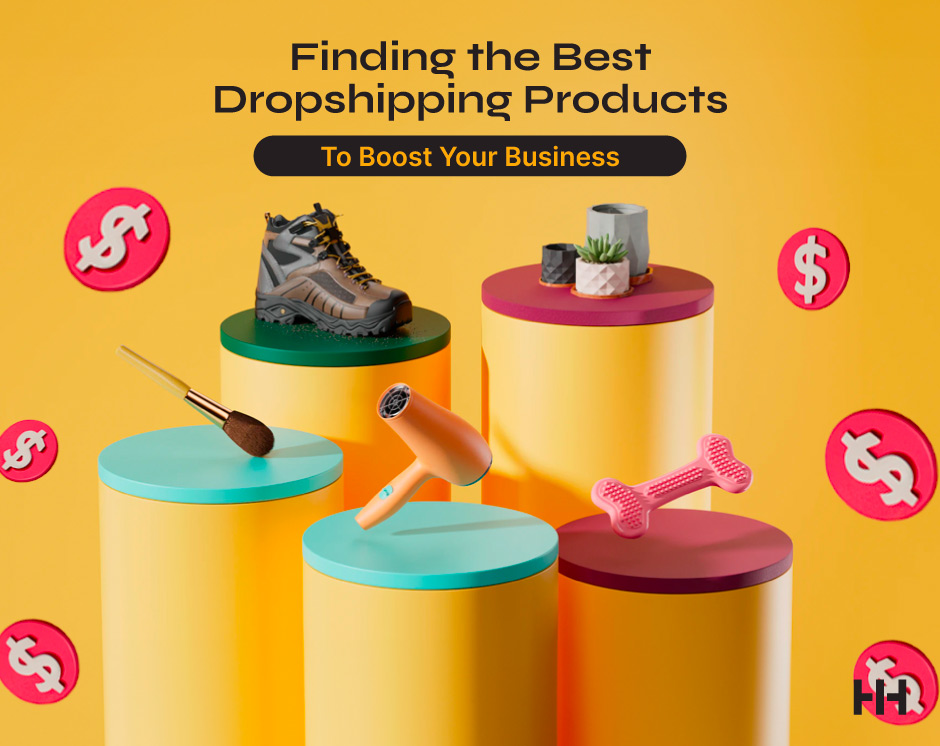
-
Once you’ve received the payment, the next step is to place the order with your supplier. You’ll send them the customer’s order details, including the product specifications and shipping address. This is where you act as the middleman, facilitating the transaction between the customer and the supplier. Make sure to choose reliable suppliers who can fulfill orders promptly and maintain product quality.
-
The Supplier Ships the Product Directly to the Customer
- After receiving the order, the supplier prepares the product for shipment. They handle the packaging and shipping, sending the item directly to your customer. This step eliminates the need for you to manage inventory or handle shipping logistics. It’s essential to keep your customers informed about their order status, enhancing their shopping experience and building trust.
The Flow of Money and Goods
The flow of money and goods in a dropshipping model is straightforward yet crucial for your business’s success:
- Money Flow:
- Customer → You (retail price) → Supplier (wholesale price)
-
You keep the difference as your profit margin, which can vary based on the product and your pricing strategy.
-
Goods Flow:
- Supplier → Customer
- The supplier handles all aspects of inventory and shipping, allowing you to focus on marketing and customer service.
An Analogy for Clarity
Think of yourself as a digital storefront. Imagine a physical store where customers browse products, but instead of stocking items on shelves, you showcase products from various suppliers. When a customer makes a purchase, you quickly contact the supplier to fulfill the order. Just like a physical store doesn’t need to produce the items it sells, you don’t need to manufacture or store any products. Your role is to connect customers with suppliers, ensuring a smooth transaction.
Key Takeaways
- No Inventory Hassle: You never handle the products yourself, reducing overhead costs and risks.
- Focus on Marketing: Your primary tasks are to market your store and provide excellent customer service.
- Scalability: As orders increase, your business can grow without the complications of managing stock or warehousing.
By understanding this step-by-step process, you can navigate the dropshipping landscape more effectively. Embrace the journey with confidence, knowing that you are equipped with the knowledge to build a successful online business. Remember, research, and choosing the right products and suppliers are key to your success in the dropshipping world!
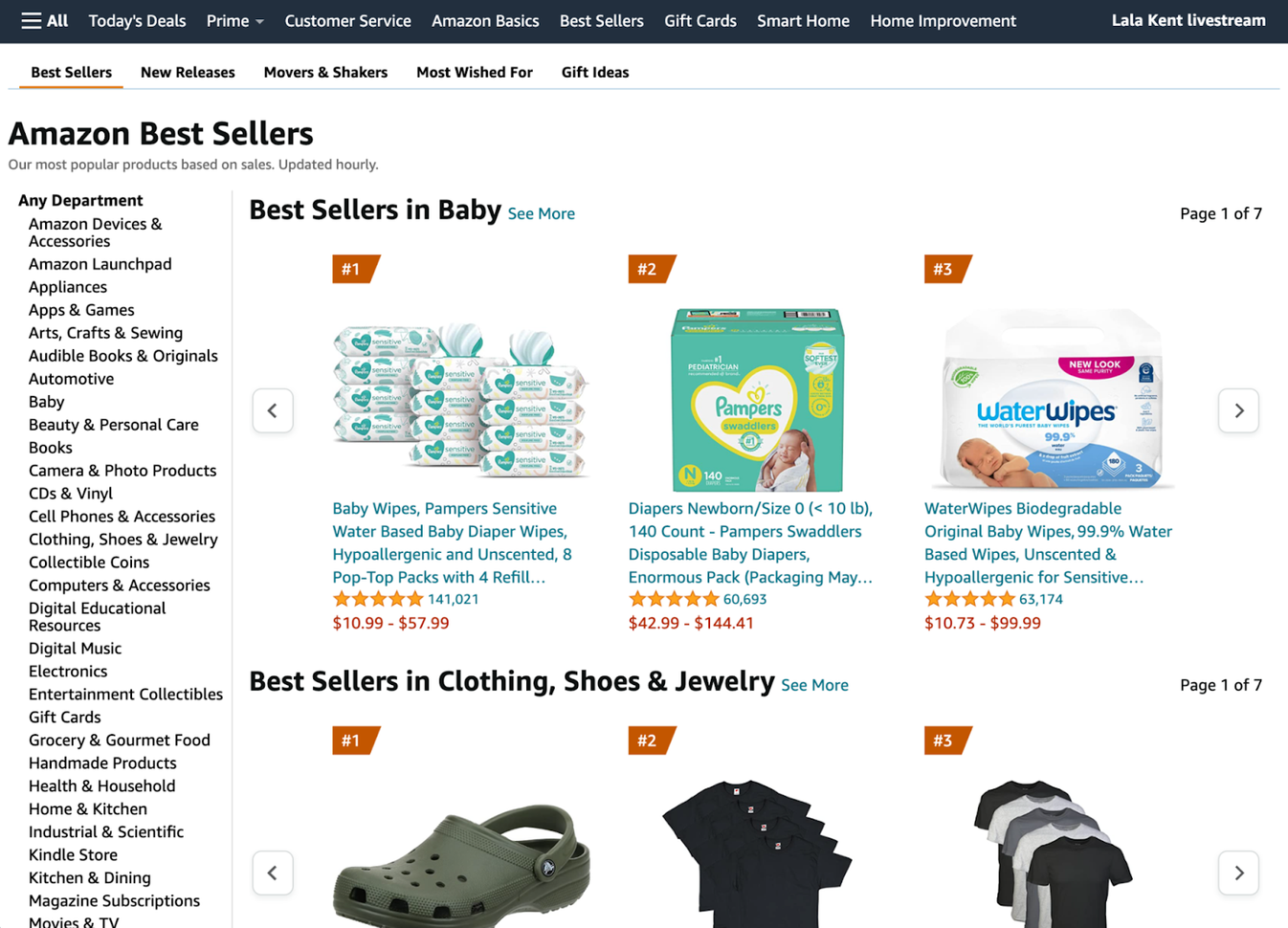
The Pros and Cons of Dropshipping: Is It Right for You?
Advantages and Challenges of Dropshipping
Below is a detailed comparison of the advantages and challenges associated with the dropshipping business model. This overview can help you make an informed decision about whether dropshipping is the right fit for your entrepreneurial journey.
| Advantages of Dropshipping (Pros) | Challenges of Dropshipping (Cons) |
|---|---|
| 1. Low Financial Risk: No need to invest heavily in inventory upfront. | 1. Low Profit Margins: Competitive pricing often leads to smaller profit margins, typically between 10% to 30%. |
| 2. Easy to Start: Setting up an online store is straightforward and can be done quickly. | 2. High Competition: The low barrier to entry means many sellers compete for the same customers. |
| 3. Wide Product Selection: Access to a vast range of products from various suppliers without holding inventory. | 3. Limited Control: Sellers have little control over product quality, shipping times, and inventory levels, which can affect customer satisfaction. |
| 4. Flexibility: Ability to run the business from anywhere with internet access, making it suitable for digital nomads. | 4. Dependence on Suppliers: Relying on third-party suppliers can lead to challenges if they fail to deliver or maintain product quality. |
| 5. Scalability: Easier to scale the business as you don’t need to manage physical inventory or fulfillment processes. | 5. Customer Service Issues: Handling returns, exchanges, and customer complaints can be complicated, as you do not manage the product directly. |
| 6. Market Testing: Ability to test various products and niches without financial commitment to inventory. | 6. Shipping Complexities: Managing shipping costs and times can be complicated, especially when dealing with multiple suppliers. |
| 7. Focus on Marketing: More time can be spent on marketing and customer acquisition rather than logistics. | 7. Legal and Tax Obligations: Navigating the legalities of selling products, including taxes and import/export laws, can be daunting. |
Key Advantages of Dropshipping
Low Financial Risk: One of the most appealing aspects of dropshipping is the significantly reduced financial risk. Traditional retail requires substantial investment in inventory, which can be a barrier for many aspiring entrepreneurs. With dropshipping, you can launch your business without the need for upfront inventory costs. You only pay for products after you make a sale, allowing you to allocate resources to marketing and customer acquisition instead.
Easy to Start: The simplicity of setting up a dropshipping business is another major advantage. Many e-commerce platforms, like Shopify and WooCommerce, offer user-friendly interfaces and integrations with dropshipping suppliers. This accessibility allows even beginners to create and manage an online store with relative ease.
Wide Product Selection: Dropshipping opens the door to a vast array of products across multiple niches. You can offer a diverse range of items without the need to invest in stock. This flexibility allows you to test different markets and adapt to trends quickly, making it easier to find what resonates with your audience.
Significant Challenges of Dropshipping
Low Profit Margins: While dropshipping can be profitable, it’s essential to understand that profit margins can be lower than traditional retail models. The competition is fierce, forcing many sellers to price their products aggressively. This often results in profit margins that can range from 10% to 30%, which may not be sustainable for everyone, especially when factoring in advertising costs.
High Competition: The ease of entry into the dropshipping market means that you will likely face significant competition. Numerous businesses may sell the same or similar products, making it challenging to differentiate your store. It’s crucial to find a unique selling proposition (USP) or niche to stand out and attract customers.
Limited Control Over Quality and Fulfillment: Because you do not handle the products directly, you have limited control over their quality and shipping processes. Issues such as delayed shipping times, product defects, or incorrect orders can lead to negative customer experiences. Managing customer expectations and providing excellent service can become a daunting task when you’re relying on third-party suppliers.
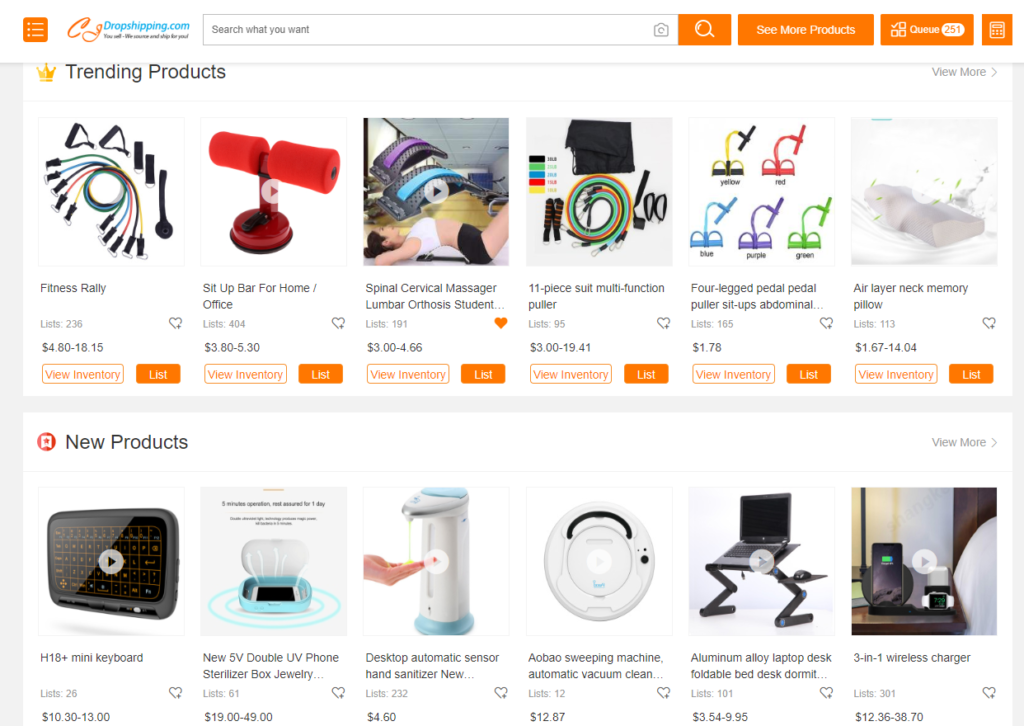
Conclusion
In summary, dropshipping presents an exciting opportunity for aspiring entrepreneurs to start an online business with minimal investment and risk. However, it is not without its challenges. Understanding both the advantages and disadvantages is crucial for determining if this model aligns with your business goals and capabilities.
If you decide that dropshipping is right for you, focus on selecting reliable suppliers, optimizing your product offerings, and investing in effective marketing strategies to carve out your niche in this competitive landscape. With the right approach, you can build a successful dropshipping business that thrives in the ever-evolving e-commerce world.
Step 1: Finding a Profitable Niche and Winning Products
What Makes a Good Niche?
Finding a profitable niche is one of the most crucial steps in establishing a successful dropshipping business. A good niche should meet several criteria to ensure that it can attract customers and generate sales:
-
Passion and Interest: Ideally, choose a niche that you are passionate about or have a keen interest in. This enthusiasm will make it easier for you to stay motivated and connected with your audience.
-
Market Demand: Research the market to determine if there is a demand for the products in your chosen niche. Utilize tools like Google Trends, keyword research tools, and social media insights to gauge interest levels.
-
Low Competition: While some competition is healthy, too much can make it difficult to stand out. Look for niches that have demand but are not oversaturated with sellers.
-
Profitability: Assess the potential profit margins in your niche. Ideally, you should aim for products that can be sold with a markup that allows for healthy profit margins, typically between 10% and 50%.
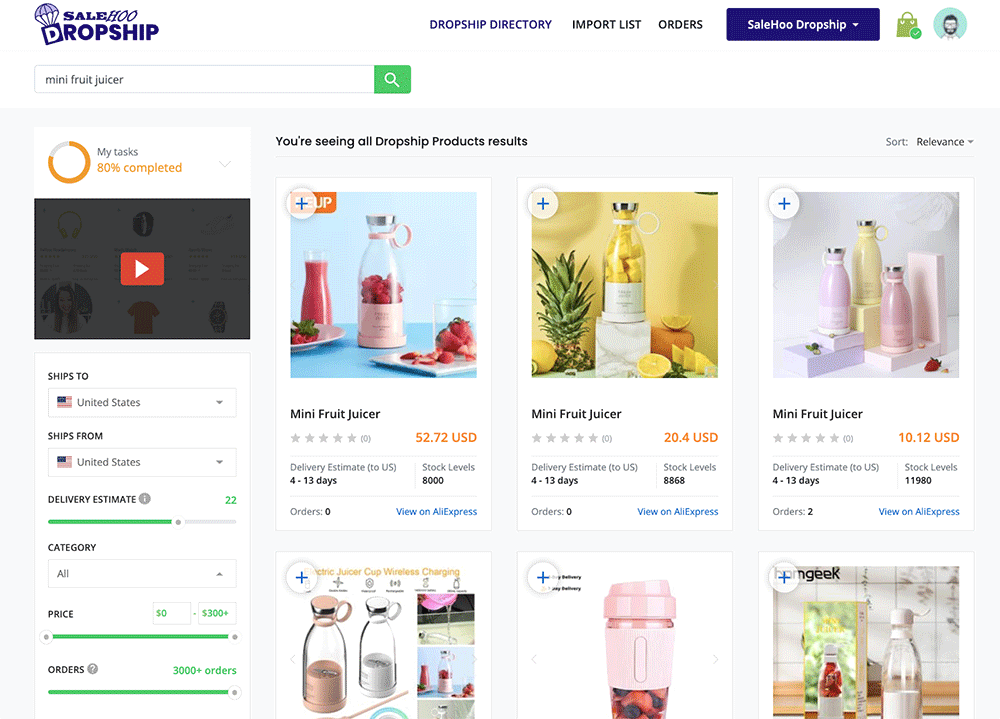
-
Target Audience: Clearly define who your target audience is. Understanding their demographics, preferences, and purchasing behaviors will help tailor your marketing efforts effectively.
How to Brainstorm Niche Ideas
Once you understand what makes a good niche, it’s time to brainstorm ideas. Here are some effective methods to generate niche ideas:
-
Personal Interests and Hobbies: Start with what you know. List down your hobbies, interests, and skills. This can often lead to unique niche opportunities that you’re familiar with.
-
Marketplaces and Supplier Catalogs: Browse through popular e-commerce platforms like Amazon, eBay, or specialized dropshipping supplier marketplaces. Identify categories and products that pique your interest and seem to have a following.
-
Social Media and Trend Analysis: Explore platforms like Instagram, Pinterest, and TikTok. Look for trending hashtags and content that resonates with users. Tools like BuzzSumo can also help identify popular topics and products.
-
Online Forums and Communities: Engage in forums like Reddit, Quora, or niche-specific communities. Observe what questions people are asking and the products they are discussing. This can reveal gaps in the market.
-
Seasonal Trends: Pay attention to seasonal trends and events. Products that cater to holidays, seasons, or events often have temporary spikes in demand, which can be leveraged for short-term profits.
Validating Your Niche
After brainstorming niche ideas, it’s crucial to validate them before diving in. Here are steps to ensure your niche has potential:
-
Conduct Keyword Research: Use tools like Google Keyword Planner or Ahrefs to analyze search volume for relevant keywords. A higher search volume indicates a greater interest in that niche.
-
Competitor Analysis: Identify your competitors within the niche. Analyze their product offerings, pricing strategies, and customer engagement. Tools like SEMrush can provide insights into their traffic and marketing strategies.
-
Test with Minimal Investment: Create a simple landing page or social media ad to gauge interest in your niche. Use platforms like Facebook or Instagram to run low-budget ads to see if there is traction.
-
Engage with Your Audience: Utilize surveys or polls on social media to gather feedback about your niche ideas. This direct engagement can provide valuable insights into potential customer interest.
-
Evaluate Trends Over Time: Make sure the niche is not just a fleeting trend. Use Google Trends to analyze the interest over time and ensure it has consistent or growing demand.
Methods for Finding Winning Products
Once you have validated your niche, the next step is to identify winning products within that niche. Here are effective methods to find products that can drive sales:
-
Supplier Marketplaces: Explore dropshipping supplier marketplaces like AliExpress, Oberlo, or SaleHoo. Look for products with high ratings, positive reviews, and a significant number of orders. These indicators suggest that a product is popular and likely to sell well.
-
Social Media Trends: Keep an eye on social media platforms to see what products influencers are promoting. Platforms like TikTok and Instagram often showcase trending products that can provide insights into what’s currently popular.
-
Google Trends: Use Google Trends to identify products that are gaining popularity. Look for upward trends in search queries related to your niche, which can indicate growing interest.
-
Customer Pain Points: Focus on products that solve specific problems for your target audience. Research common complaints or challenges that customers face and find products that address those issues effectively.
-
Criteria for Good Dropshipping Products:
- Price Point: Aim for products priced between $20 and $100. This price range tends to be ideal for impulse purchases and allows for reasonable profit margins.
- Not Easily Found in Stores: Products that are unique or not readily available in local stores can attract more interest and reduce competition.
- Compact and Lightweight: Choose products that are easy to ship and store. This reduces shipping costs and potential damage during transit.
- Potential for Upselling: Look for products that can be bundled with accessories or complementary items, which can increase average order value.
Conclusion
Finding a profitable niche and identifying winning products is a foundational step in building a successful dropshipping business. By focusing on your interests, validating your niche through research, and utilizing effective product discovery methods, you can set yourself up for success in the competitive world of e-commerce. Remember, persistence and adaptability are key. Stay informed about market trends and continuously engage with your audience to refine your offerings. With dedication and the right approach, you can create a thriving dropshipping business that meets the needs of your target market.
Step 2: Choosing the Right Dropshipping Suppliers
Understanding Dropshipping Suppliers
Choosing the right dropshipping suppliers is a critical step in establishing a successful dropshipping business. Your suppliers will directly impact the quality of your products, customer satisfaction, and ultimately, your profits. This guide will help you navigate the landscape of dropshipping suppliers, focusing on popular platforms and what to consider when selecting one.
AliExpress
Overview
AliExpress is one of the largest online marketplaces, allowing sellers to source products directly from manufacturers and wholesalers, primarily based in China. It has become a go-to platform for many dropshippers due to its vast product selection and low prices.
Pros:
– Wide Variety of Products: AliExpress offers millions of products across various categories, making it easy to find niche items.
– Low Prices: You can source products at competitive prices, which allows for higher profit margins.
– No Minimum Orders: You can order items individually, which suits the dropshipping model perfectly.
– User-Friendly Interface: The platform is straightforward to navigate, making it accessible for beginners.
Cons:
– Long Shipping Times: Since many suppliers are based in China, shipping can take several weeks, which may frustrate customers.
– Quality Control: Product quality can vary significantly from one supplier to another, leading to potential customer dissatisfaction.
– Communication Barriers: Time zone differences and language barriers can hinder effective communication with suppliers.
CJ Dropshipping
Overview
CJ Dropshipping is a comprehensive platform that offers a wide range of products, warehousing services, and fulfillment options. It aims to simplify the dropshipping process for sellers.
Pros:
– Sourcing Services: CJ Dropshipping can help you source products that are not listed on their platform, providing more flexibility.
– Faster Shipping Options: They have warehouses in various countries, including the U.S., which can significantly reduce shipping times.
– Quality Control: The platform often conducts quality checks on products, ensuring higher standards.
– User-Friendly Dashboard: CJ Dropshipping offers a streamlined interface for managing orders and tracking shipments.
Cons:
– Learning Curve: New users may find the platform a bit overwhelming at first due to its many features.
– Limited Brand Recognition: Unlike AliExpress, not all products on CJ Dropshipping have established brand recognition, which could affect customer trust.
– Potentially Higher Prices: While there are affordable options, some products may be priced higher than those on AliExpress.
USA-Based Suppliers
Overview
Choosing USA-based suppliers can be a strategic move for dropshippers looking to offer faster shipping times and higher product quality. Many suppliers cater specifically to the U.S. market.
Pros:
– Faster Shipping Times: Products shipped from within the U.S. typically arrive much quicker, enhancing customer satisfaction.
– Better Quality Control: Many USA-based suppliers maintain stricter quality control measures, ensuring higher product standards.
– Easier Communication: Time zone alignment and language similarities facilitate smoother communication.
– Brand Trust: U.S.-based brands may carry more trust with American consumers, potentially increasing conversion rates.
Cons:
– Higher Costs: Products from U.S. suppliers can be more expensive than those sourced from overseas, which may reduce profit margins.
– Limited Variety: The selection of products may be narrower compared to platforms like AliExpress.
– Minimum Order Requirements: Some suppliers may require minimum orders, which can be a barrier for new dropshippers.
What to Look for in a Good Supplier
When evaluating potential dropshipping suppliers, consider the following checklist to ensure you choose the right partner for your business:
- Communication:
-
Ensure the supplier is responsive and easy to communicate with. Quick responses can save you time and prevent misunderstandings.
-
Shipping Times:
-
Look for suppliers that can provide reasonable shipping times, ideally within a few days to a week, to enhance customer satisfaction.
-
Product Quality:
-
Research the quality of products by reading reviews and ordering samples. Consistent quality is crucial for maintaining a positive reputation.
-
Return Policies:
-
Understand the supplier’s return and refund policies. A good supplier should have clear and fair return policies to protect your business.
-
Pricing:
-
Analyze the supplier’s pricing structure. Ensure it allows you to maintain healthy profit margins while remaining competitive.
-
Reputation:
-
Research the supplier’s reputation through online forums, reviews, and testimonials. A supplier with a solid track record is more likely to be reliable.
-
Integration with E-commerce Platforms:
-
Check if the supplier integrates smoothly with your e-commerce platform (like Shopify or WooCommerce) to streamline order processing.
-
Scalability:
-
Ensure that the supplier can handle increased order volumes as your business grows. Scalability is essential for long-term success.
-
Product Range:
-
Choose suppliers with a diverse product range that aligns with your niche, allowing you to expand your offerings as needed.
-
Payment Terms:
- Understand the payment terms, including any fees associated with transactions. Transparent pricing is vital for managing your cash flow.
Conclusion
Selecting the right dropshipping supplier is paramount to your e-commerce success. By carefully evaluating platforms like AliExpress, CJ Dropshipping, and USA-based suppliers, you can find partners that align with your business goals. Use the provided checklist to ensure you make informed decisions that will support your journey in the dropshipping landscape. Remember, a reliable supplier can significantly impact your customer satisfaction and profitability, so take your time to choose wisely. Happy selling!
Step 3: Building Your Online Store
Getting Started with Your Dropshipping Store on Shopify
Building your online store is one of the most exciting steps in starting your dropshipping business. Shopify stands out as a leading e-commerce platform, making it easy for beginners to set up their stores without needing extensive technical skills. Below, I’ll guide you through the essential steps to create a successful dropshipping store on Shopify.
1. Choosing a Shopify Plan
Before diving into the design and functionality of your store, you need to select a Shopify plan that fits your budget and business goals. Shopify offers several pricing tiers:
- Basic Shopify: Best for those just starting, this plan includes essential features to launch your store.
- Shopify: Offers more advanced reporting and professional reports, suitable for growing businesses.
- Advanced Shopify: Ideal for established businesses with larger sales volumes, providing advanced features and lower transaction fees.
Start with the Basic plan to minimize initial costs, and as your business grows, you can always upgrade to a more advanced plan.
2. Picking a Theme
Your store’s theme is crucial for creating an appealing customer experience. Shopify has a robust theme store where you can find both free and paid themes. Here’s how to choose one:
- Consider Your Niche: Pick a theme that complements your product range. For example, a minimalist theme works well for fashion items, while a vibrant theme may suit tech gadgets.
- Mobile Responsiveness: Ensure the theme is mobile-friendly, as a significant portion of online shopping occurs on mobile devices.
- Customization Options: Look for a theme that allows you to customize colors, fonts, and layouts easily. This will help you create a unique brand identity.
Once you find a theme you like, install it and start customizing it to reflect your brand’s personality.
3. Setting Up Essential Pages
To build trust with your customers, it’s essential to create several key pages:
- About Us: Share your story and the mission behind your store. This helps customers connect with your brand.
- Contact Us: Provide various ways for customers to reach you, such as email, phone, or a contact form. Quick responses can significantly enhance customer satisfaction.
- Policies: Clearly outline your shipping, return, and privacy policies. This transparency builds trust and can help reduce disputes later.
Make sure these pages are easily accessible from your store’s navigation menu to enhance usability.
4. Installing Key Apps
To streamline your dropshipping operations, you’ll want to install essential apps. Here are a couple of must-have tools:
- DSers or CJ Dropshipping: These apps allow you to import products from suppliers directly into your store. They help automate order fulfillment and inventory management, making it easier to run your business.
- Oberlo: If you’re looking for a user-friendly way to find dropshipping products, Oberlo integrates seamlessly with Shopify.
- Email Marketing Apps: Consider apps like Klaviyo or Mailchimp to set up email marketing campaigns, which can help retain customers and drive sales.
Browse the Shopify App Store to find more tools that suit your needs.
5. Setting Up Payment Gateways
To receive payments from customers, you’ll need to set up payment gateways. Shopify supports a variety of payment options, including:
- Shopify Payments: This is the easiest option, allowing you to accept credit cards directly. It also offers lower transaction fees compared to third-party gateways.
- PayPal: Many customers prefer using PayPal for online transactions, so setting it up can increase your conversion rate.
- Stripe: Another popular option that allows for credit card payments, especially for international transactions.
Go to your Shopify admin panel, click on “Settings,” then “Payments,” and follow the prompts to set up your preferred payment methods.
Exploring WooCommerce as an Alternative
While Shopify is a fantastic choice for most beginners, you may also consider WooCommerce if you prefer a more customizable option. WooCommerce is a plugin for WordPress, offering extensive customization capabilities and flexibility. However, it requires more technical knowledge and ongoing management, making it better suited for those with some experience in website development.
Conclusion
Building your dropshipping store on Shopify can be an exciting and rewarding venture. By following these steps—choosing the right plan, selecting an appealing theme, setting up essential pages, installing key apps, and configuring payment gateways—you’ll be well on your way to launching a successful online business. Remember, the key to success in dropshipping lies in continuous learning, adapting to market trends, and providing excellent customer service. Embrace the journey, and enjoy the process of building your brand!
Step 4: Marketing Your Dropshipping Business to Get Sales
Social Media Marketing (TikTok & Instagram)
Social media platforms are a powerful way to connect with potential customers and build brand awareness for your dropshipping business. TikTok and Instagram, in particular, have proven to be effective for e-commerce due to their visual nature and engaging formats. Here are some actionable tips to harness these platforms:
- Create Engaging Content
- Tip: Focus on storytelling. Share videos showcasing your products in real-life scenarios. For example, if you’re selling pet products, create fun videos of pets using your items. Use popular music and trends to make your content more relatable and shareable.
-
Example: A dropshipping store selling dog treats might post a TikTok of a dog eagerly waiting for a treat, capturing the moment when the owner gives it to them. This not only showcases the product but also engages viewers emotionally.
-
Leverage Influencer Partnerships
- Tip: Collaborate with micro-influencers in your niche. They often have dedicated followers and can promote your products authentically.
-
Example: Reach out to pet influencers to feature your dog treats in their content, offering them free products in exchange for a review or shoutout. This can help you tap into their audience and gain credibility.
-
Utilize Stories and Reels
- Tip: Use Instagram Stories and Reels to provide quick product showcases, behind-the-scenes content, or special promotions. This content is ephemeral and can create urgency.
-
Example: Post a limited-time discount code on your Instagram Story, encouraging followers to act quickly. You could also show how your products are made or packaged to foster a connection with your audience.
-
Engage with Your Audience
- Tip: Respond to comments, messages, and mentions promptly. Engagement can increase your visibility on these platforms.
-
Example: Host Q&A sessions on Instagram Live to answer questions about your products, fostering a community and encouraging purchases directly from your audience.
-
Run Contests and Giveaways
- Tip: Create contests that require participants to tag friends and share your posts. This can exponentially increase your reach.
- Example: For a dropshipping store selling skincare products, run a giveaway where participants must follow your account, like the post, and tag three friends for a chance to win a skincare bundle.
Paid Advertising (Facebook/Instagram Ads)
Investing in paid advertising can provide a significant boost to your dropshipping business. Facebook and Instagram ads allow for targeted marketing, enabling you to reach your ideal customer base. Here are some strategies to maximize your ad spend:
- Define Your Target Audience
- Tip: Use Facebook’s Audience Insights to define your ideal customer based on demographics, interests, and behaviors.
-
Example: If you’re selling fitness equipment, target individuals interested in health and wellness, gym memberships, or fitness influencers.
-
Create Eye-Catching Ad Creatives
- Tip: Design ads that capture attention quickly. Use high-quality images or videos, bold text, and clear calls to action (CTAs).
-
Example: An ad for a stylish handbag could feature a model using the bag in a chic urban setting with a compelling caption like “Transform your look today!”
-
A/B Test Your Ads
- Tip: Experiment with different ad formats, copy, and visuals to see what resonates best with your audience.
-
Example: Create two variations of an ad for a skincare product—one with a before-and-after image and another showcasing customer testimonials—and analyze which performs better.
-
Utilize Retargeting Ads
- Tip: Set up retargeting campaigns to reach users who have previously visited your website but didn’t make a purchase.
-
Example: If someone viewed a specific product but left without buying, serve them an ad featuring that product with an enticing discount to encourage conversion.
-
Monitor and Optimize Performance
- Tip: Regularly check your ad performance metrics (click-through rates, conversions, etc.) and adjust your strategy based on what you find.
- Example: If you notice that your ad for home decor items is getting a high click-through rate but low conversions, you might need to adjust the landing page or the pricing strategy.
Search Engine Optimization (SEO)
SEO is crucial for driving organic traffic to your dropshipping store. While it may take time to see results, implementing effective SEO strategies can lead to sustainable sales growth. Here are some actionable tips:
- Conduct Keyword Research
- Tip: Use tools like Google Keyword Planner or Ubersuggest to find relevant keywords that potential customers are searching for.
-
Example: If you’re selling eco-friendly home goods, look for keywords like “sustainable kitchen products” or “biodegradable cleaning supplies” to target in your content.
-
Optimize Product Descriptions
- Tip: Write unique and informative product descriptions that incorporate your target keywords naturally.
-
Example: Instead of a generic description, highlight the benefits and features of a bamboo toothbrush while including keywords like “eco-friendly” and “biodegradable.”
-
Create Valuable Content
- Tip: Start a blog related to your niche, providing valuable information that can drive traffic to your site and improve your SEO.
-
Example: A dropshipping store selling fitness gear could create blog posts on topics like “Top 10 Exercises for Beginners” or “How to Choose the Right Yoga Mat,” linking to relevant products.
-
Improve Site Speed and Mobile Optimization
- Tip: Ensure your website loads quickly and is mobile-friendly, as these factors significantly influence user experience and SEO rankings.
-
Example: Use tools like Google PageSpeed Insights to analyze your site speed and make necessary adjustments, like compressing images or minimizing scripts.
-
Build Backlinks
- Tip: Reach out to relevant blogs or websites in your niche to collaborate and gain backlinks to your store. This can enhance your site’s authority and improve your SEO ranking.
- Example: Offer to write guest posts on a popular health blog, including a link back to your fitness products, thereby driving traffic and improving your SEO.
Email Marketing
Email marketing remains one of the most effective channels for converting leads into sales. With a well-planned email strategy, you can nurture your audience and drive repeat purchases. Here are key steps to implement:
- Build an Email List
- Tip: Use lead magnets such as discount codes, free shipping, or exclusive content to encourage visitors to subscribe to your email list.
-
Example: Offer a 10% discount on their first purchase when customers sign up for your newsletter.
-
Segment Your Audience
- Tip: Divide your email list into segments based on customer behavior, preferences, or demographics to send targeted messages.
-
Example: Create segments for first-time buyers, repeat customers, and abandoned cart users, allowing for personalized communication that resonates with each group.
-
Craft Compelling Subject Lines
- Tip: Write engaging subject lines that encourage recipients to open your emails. Keep them concise and include a sense of urgency or curiosity.
-
Example: Use subject lines like “Last Chance: 20% Off Ends Tonight!” or “Discover the Secret to Glowing Skin!”
-
Include Clear Calls to Action (CTAs)
- Tip: Ensure each email has a clear and compelling CTA that directs recipients to take action, such as “Shop Now,” “Claim Your Discount,” or “Explore New Arrivals.”
-
Example: In a newsletter showcasing new products, include a button that leads directly to the product page with a message like, “Shop Our Latest Collection!”
-
Analyze and Optimize Campaigns
- Tip: Use analytics tools to track open rates, click-through rates, and conversions to understand what works and refine your strategy.
- Example: If you notice that emails sent on Sundays have higher open rates, consider scheduling your campaigns for that day to maximize engagement.
By implementing these marketing strategies, you can effectively promote your dropshipping business and drive sales. Remember, consistency and experimentation are key to finding what works best for your specific audience. Keep learning, adapting, and engaging with your customers to foster long-term success!
Common Mistakes to Avoid as a Beginner
1. Choosing a Bad Niche
One of the most critical mistakes beginners make is selecting a niche that is either oversaturated or lacks demand. A poorly chosen niche can lead to low sales and wasted marketing efforts.
Solution: Conduct thorough market research before settling on a niche. Use tools like Google Trends, social media platforms, and keyword research tools to gauge interest levels. Look for niches with consistent demand but less competition. Consider products that are trending or have unique selling propositions that differentiate you from competitors.
2. Not Testing Products
Many new dropshippers jump straight into selling products without testing them first. This can result in poor quality items reaching customers, leading to negative reviews and returns.
Solution: Before fully committing to a product, order samples for yourself. Evaluate the product’s quality, shipping time, and packaging. This will not only give you firsthand experience but also help you create better marketing content and set realistic customer expectations.
3. Poor Customer Service
Customer service is often overlooked by beginners who focus primarily on product selection and marketing. However, inadequate customer support can lead to dissatisfaction, refunds, and a tarnished reputation.
Solution: Develop a robust customer service strategy from the start. Set up clear communication channels, such as email, live chat, or phone support. Be responsive and address customer queries promptly. Consider using customer service tools to manage inquiries efficiently and maintain a positive relationship with your customers.
4. Ignoring Shipping Times
Many beginners underestimate the importance of shipping times. Long or inconsistent shipping can frustrate customers and lead to abandoned carts or negative feedback.
Solution: Always disclose shipping times on your website. Choose suppliers who provide reliable and timely shipping. If possible, source products from local suppliers to reduce shipping times. Regularly communicate with customers about their order status to keep them informed and engaged.
5. Unrealistic Profit Expectations
Beginners often enter dropshipping with inflated expectations regarding profit margins. While dropshipping can be lucrative, it typically involves lower profit margins compared to traditional retail models.
Solution: Set realistic financial goals by understanding the average profit margins in your niche (typically between 10% to 30%). Create a detailed budget that includes costs such as product sourcing, shipping, marketing, and website maintenance. This will help you maintain a sustainable business model and avoid disappointment.
6. Failing to Optimize for SEO
Ignoring search engine optimization (SEO) is a common mistake that can limit your online visibility. Without proper optimization, your store may struggle to attract organic traffic.
Solution: Invest time in learning the basics of SEO. Focus on optimizing product descriptions, titles, and images with relevant keywords. Create valuable content around your niche to attract visitors. Consider using SEO tools to analyze your site and identify areas for improvement.
7. Not Utilizing Social Media
Many beginners neglect the potential of social media as a marketing tool. This can severely limit their reach and brand awareness.
Solution: Develop a social media strategy that includes platforms relevant to your target audience. Create engaging content, run targeted ads, and interact with your followers. Utilize social media to showcase products, share customer testimonials, and build a community around your brand.
8. Overcomplicating the Business Model
Some beginners complicate their dropshipping model with unnecessary features or products, making it difficult to manage effectively. This can lead to confusion and operational inefficiencies.
Solution: Start simple. Focus on a few key products and streamline your processes. As you gain experience and understand what works, you can gradually expand your product line and enhance your business model.
9. Neglecting Analytics
Failing to track performance metrics is a common oversight that can prevent beginners from understanding their business’s health. Without data, making informed decisions becomes nearly impossible.
Solution: Utilize analytics tools to monitor website traffic, conversion rates, and customer behavior. Regularly review this data to identify trends and areas for improvement. Use insights to refine your marketing strategies and product offerings.
10. Skipping Legal Considerations
Many aspiring dropshippers overlook the legal aspects of running an online business, such as taxes, business licenses, and regulations. This can lead to complications down the line.
Solution: Research the legal requirements for operating an online business in your region. Consult with a legal expert or accountant to ensure you comply with all necessary regulations. Taking care of these aspects from the start will save you time and potential legal issues in the future.
By being aware of these common pitfalls and implementing the solutions provided, you can set a solid foundation for your dropshipping venture. Remember, every successful entrepreneur started somewhere, and learning from mistakes is part of the journey!
Frequently Asked Questions (FAQs) about best dropshipping products
1. What are the best dropshipping products to start with?
The best dropshipping products typically have high demand, good profit margins, and are not easily available in local stores. Categories to consider include fashion items (like clothing and accessories), health and beauty products, electronics, home goods, and pet supplies. Researching current trends using tools like Google Trends or social media can also help identify popular products.
2. How do I find trending dropshipping products?
To find trending dropshipping products, monitor social media platforms, browse popular e-commerce sites, and use analytics tools like Google Trends. Joining online forums and communities focused on dropshipping can also provide insights into what products are gaining traction. Additionally, competitor analysis can reveal successful products in your niche.
3. How much money do I need to start a dropshipping business?
Starting a dropshipping business can be relatively low-cost compared to traditional retail. You can begin with as little as $200 to $500, which will cover expenses like setting up a website, marketing, and initial product research. However, having a budget of $1,000 or more is advisable to give you more flexibility for marketing and potential initial product purchases.
4. Do I need to register a company to start dropshipping?
While it’s not legally required to register a company to start dropshipping, it’s highly recommended. Registering your business can help you establish credibility, protect your personal assets, and make it easier to manage taxes. Depending on your location, you may also need to obtain a sales tax permit.
5. What are the qualities of a good dropshipping product?
A good dropshipping product should be unique, have a decent profit margin (ideally 10-30%), and be lightweight and compact for shipping. It should also not be easily available in local stores and should appeal to a specific target audience. Consider products that allow for upselling opportunities and those with favorable reviews and ratings.
6. How do I handle returns and customer service in dropshipping?
Returns can be managed by clearly outlining your return policy on your website. Typically, the supplier will handle returns, but you should ensure you have a reliable process in place. Communicate openly with your customers and provide prompt responses to inquiries. Excellent customer service can lead to repeat business and positive reviews.
7. Is dropshipping still a profitable business model?
Yes, dropshipping can be a profitable business model, especially if you choose the right products and market them effectively. Profit margins can range from 10% to 30%, and with the right strategies, some sellers achieve even higher profits. Success in dropshipping largely depends on product selection, marketing, and customer service.
8. How do I choose a reliable dropshipping supplier?
Choosing a reliable dropshipping supplier is crucial for your business’s success. Look for suppliers with good reviews, a solid track record, and a wide range of quality products. Consider suppliers that offer fast shipping, clear communication, and responsive customer service. Platforms like AliExpress, Oberlo, and SaleHoo are good starting points.
9. Can I sell branded products through dropshipping?
Selling branded products through dropshipping can be complex due to licensing and trademark issues. Generally, it’s safer to focus on generic or private label products unless you have explicit permission from the brand. Always check the supplier’s policies regarding branding to avoid legal complications.
10. What should I do if my dropshipping products don’t sell?
If your dropshipping products aren’t selling, analyze your marketing strategies, product pricing, and target audience. Consider testing different products or niches based on current trends. Improving your website’s SEO, engaging with your audience on social media, and running targeted ads can also help boost sales. Don’t hesitate to pivot your approach based on what the market demands.
Conclusion: Your Next Steps to Launching Your Business
Your Path to Success in Dropshipping
Embarking on your dropshipping journey is an exciting venture, but it’s essential to understand that success doesn’t happen overnight. This model offers a unique opportunity to start your own online business with minimal investment, but it requires dedication, learning, and strategic planning. Here are the key steps to get you started:
-
Research Your Niche: Identify a niche that not only interests you but also has potential profitability. Use tools like Google Trends, social media insights, and competitor analysis to discover trending products. Categories such as fashion, electronics, and home goods are consistently popular, but your unique angle can set you apart.
-
Find Reliable Suppliers: Partner with trustworthy dropshipping suppliers who offer high-quality products and reliable shipping. Consider platforms like TopDawg and Gelato for vetted suppliers that streamline your operations. Remember, your supplier is crucial for maintaining product quality and customer satisfaction.
-
Build Your Online Store: Choose an e-commerce platform like Shopify or WooCommerce to set up your online store. Ensure your website is user-friendly, visually appealing, and optimized for mobile devices. Invest time in crafting compelling product descriptions and high-quality images to attract customers.
-
Develop a Marketing Strategy: Utilize social media, email marketing, and SEO to drive traffic to your store. Engage with your audience through valuable content and promotions to build a loyal customer base. Remember, consistency is key in marketing efforts.
-
Monitor and Optimize: Once your store is live, track your performance metrics closely. Analyze sales data, customer feedback, and website analytics to identify areas for improvement. Being adaptable and responsive to market trends will give you a competitive edge.
Take the First Step Today
Remember, dropshipping is not a get-rich-quick scheme; it’s a legitimate business model that requires effort, patience, and continuous learning. Embrace the challenges ahead, and don’t be afraid to ask for help or seek mentorship along the way.
Your journey begins with a single step. Take action today by researching your niche or setting up your online store. The world of e-commerce is waiting for your unique contribution—make it happen!
Important Disclaimer
⚠️ Important Disclaimer
The information provided in this guide is for educational purposes only. Starting a business involves risks, and success is not guaranteed. Please conduct your own thorough research and consider consulting with financial and legal professionals before making any business decisions.
